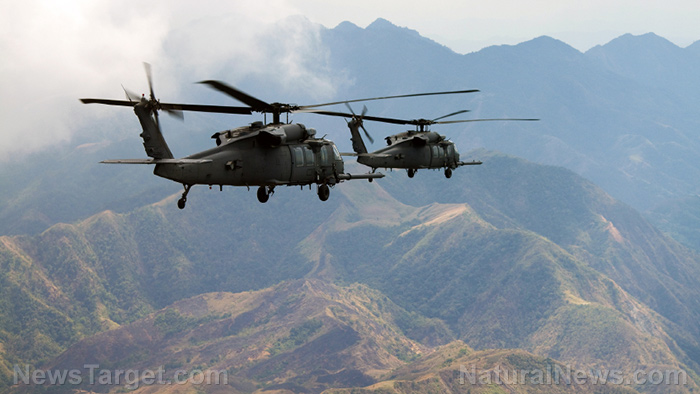
Between 2003 and 2016, the U.S. supplied 208 aircraft, almost 76,000 vehicles and 600,000 weapons, according to a 2017 report by the U.S. Government Accountability Office. The vehicles included 22 Humvees, 50,000 tactical vehicles and nearly 1,000 mine-resistant vehicles, while the weapons included 350,000 M4 and M16 rifles, 60,000 machine guns and 25,000 grenade launchers.
The scrubbed audits and reports included a detailed accounting of what the U.S. had provided to Afghan forces, down to the number of night vision devices, hand grenades, Black Hawk helicopters and armored vehicles. Reports and documents have been pulled from a string of websites detailing U.S. spending in Afghanistan.
In recent days, visitors to the website of the Special Inspector General for Afghanistan Reconstruction (SIGAR) found several links to reports detailing spending and misuse of funds to return 404 error messages.
State Department makes call to remove reports
The Department of State (DOS) admitted to removing the reports but justified the move to protect Afghan allies. (Related: Biden knew Afghan military collapse was eminent: He told Afghan president that both needed to create "perception" Taliban wasn’t winning "whether it's true or not.")
"The safety of our Afghan contacts is of utmost importance to us," said a spokesperson. "The State Department advised other federal agencies to review their web properties for content that highlights cooperation/participation between an Afghan citizen and the USG or a USG partner and remove from public view if it poses a security risk."
The move came as Taliban fighters took what was left into their possession.
Taliban fighters stood aboard captured Humvees and armored SUVs as they paraded through Kandahar, where propaganda video has circulated of a Black Hawk flying overhead.
According to reports, Taliban chiefs have ordered their troops to hunt down pilots from the disbanded Afghan Air Force. Those pilots received expensive training from the U.S. and its allies to fly high-tech warplanes and choppers.
In all, they are believed to have seized an air force worth tens of millions of dollars. Before Kabul fell, planes and helicopters were disabled by U.S. troops, while others were flown overseas
But those were just a dent in the extraordinary bounty that the Taliban fighters have collected as they plowed across the country, capturing 10 major airfields from Bagram to Mazar-i-Sharif. Taliban fighters were seen clambering into the cockpit of a $14 million Hercules transport jet after capturing the Hamid Karzai International Airport in Kabul on Tuesday, Aug. 31.
Taliban fighters now have more air power than a third of NATO members
According to the June 30 tally by SIGAR, the Afghan Air Force had 43 MD-530 helicopters, 33 Black Hawks, 32 Mi-17s, 33 C-208 propeller planes, 23 A-19 turboprop light attack planes and 3 Hercules C-130s.
Gen. Frank McKenzie, commander of the U.S. evacuation mission, said that his troops have disabled 73 aircraft before finally leaving Afghanistan. Uzbekistan also confirmed that 46 Afghan aircraft, including 24 helicopters, had arrived in the country in order to prevent them from falling into the hands of the Taliban.
That leaves as many as 48 aircraft seized by the Taliban, giving them more air power than 10 of the 30 members of the North Atlantic Treaty Organization (NATO), namely: Albania, Bosnia, Estonia, Iceland, Latvia, Lithuania, Luxembourg, Montenegro, North Macedonia and Slovenia.
It is unclear how many former pilots the Taliban fighters have been able to recruit.
A recent video emerged on social media showing a group of militants flying in a Russian-made Mi-17 chopper. Another video showed a Black Hawk heading to the contested Panjshir Valley north of Kabul, where the country's last stand is being fought by the Northern Alliance resistance fighters. (Related: Video shows the Taliban operating US-made Black Hawk military helicopter that Biden and the Pentagon handed over.)
It is unlikely that an amateur would be able to get such a helicopter off the ground, let alone be able to land it.
Follow MilitaryTechnology.news for more news and information related to military technology and weapons of war.
Sources include:
Please contact us for more information.

















